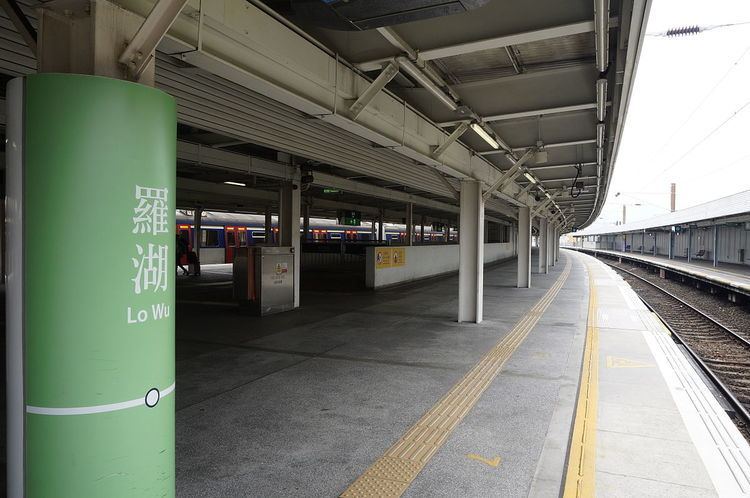Traditional Chinese 羅湖 Cantonese Yale Lòwù Hanyu Pinyin Address Lo Wu, Hong Kong Level 1 | Simplified Chinese 罗湖 Hanyu Pinyin Yale Romanization Lòwù Opened 14 October 1949 | |
 | ||
Owner Kowloon-Canton Railway Corporation Platforms in use 4 (Spanish solution: 2 side platforms and island platform) Similar Lok Ma Chau Station, Hung Hom Station, Kowloon Tong Station, Sheung Shui Station, Tai Wai Station | ||
Mtr from and to lo wu station
Lo Wu (Chinese: 羅湖; Cantonese Yale: Lòwù; : [lɔ̭ːwṷː]) is the northern terminus of the East Rail Line (Kowloon-Canton Railway) of Hong Kong, located in Lo Wu within the Closed Area on Hong Kong's northern frontier. The station serves as a primary checkpoint for rail passengers between Hong Kong and mainland China and vice versa, rather than serving a specific residential/commercial area like the other stations do. It is also the northernmost railway station in Hong Kong.
Contents
Lo wu station china
History
When the Kowloon-Canton Railway first went into service, trains did not stop at Lo Wu, as there was no border patrol at the time. However, shortly after the People's Republic of China was created in October 1949, the KCR announced that trains would terminate at Lo Wu, and that passengers would be able to cross the border on foot.
Refurbishment work of the station started in 2002 and new facilities such as a group waiting area and new ticket gates were introduced. Since 28 December 2004, this station also serves as the interchange station for the Shenzhen Metro Luohu station, which shares the same Chinese name.
Station layout
Platform 4 was built in 2004 to accommodate increasing patronage. Before the completion of refurbishment works, trains would stop at the island platform for simultaneous alighting and boarding. The platform was always crowded during the time. The building of platform 4 and converting platform 1 (which was rarely used before the refurbishment) for boarding improved passenger flow. Ever since, trains have been emptied with doors opened towards platforms 2 and 3 for passengers getting off; afterwards, the doors are opened to platforms 1 and 4 for boarding passengers.
This particular system of loading/unloading is popular in Europe and many US subway systems and named the Spanish solution.
This station is unique to rail systems of any kind in that automatic doors limit the number of people that are allowed on the platform. Two large glass sliding doors close after about a minute elapses from the time the train pulls in for boarding. These doors are located after the area for validating at the ticket barriers, but before the platforms area. Even with this system in place, passengers may have to wait for the next train to arrive before they can travel back towards Hung Hom, as alternate trains pull into each paired platform. This layout makes use of the Spanish solution.
Entrances/exits
The station has three exits:
